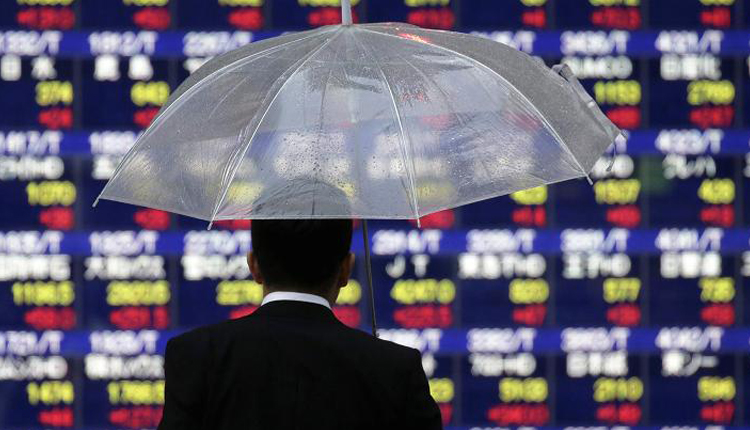Asian stocks were in mixed territory on Tuesday afternoon after the S&P 500 and Nasdaq Composite broke a four-day losing streak overnight.
The White House announced on Monday night that it was in the process of coordinating a second meeting between U.S. President Donald Trump and North Korean leader Kim Jong Un.
The Nikkei 225 extended its gains, trading up by 1.16 percent in the afternoon. South Korea’s Kospi, however, continued to trade lower by 0.14 percent.
Down Under, the ASX 200 was higher by 0.62 percent as the financial sector rose 0.97 percent in the afternoon.
In the Greater China markets, Hong Kong’s Hang Seng index was largely flat in the afternoon. The Shanghai composite climbed up by 0.3 percent while the Shenzhen composite saw extended gains of around 0.6 percent.
Both the S&P 500 and Nasdaq snapped a four-day losing streak to close higher stateside. The S&P 500 rose by 0.2 percent to 2,877.13 while the Nasdaq Composite was up by 0.3 percent to 7,924.16. The Dow Jones Industrial Average , however, fell by 59.47 points to close at 25,857.07.
On Monday, the White House announced that Trumphad received a request from North Korea’s Kim for a follow-up meeting after their historic meetingin Singapore in June 2018.
Described by the White House as a “very warm, positive letter,” press secretary Sarah Huckabee Sanders informed reporters at the press briefing on Monday that the administration was open to the request and was “already in the process of coordinating” the meeting.
Trade also remains another focal point for markets, with Canada and the U.S. yet to secure a deal that would replace the North American Free Trade Agreement. Trump announced last Friday that he was ready to slap tariffs on an additional $267 billion of Chinese imports, on top of the $200 billion already in the administration’s sights.
In currency markets, the U.S. dollar index, which tracks the greenback against a basket of currencies, was at 95.156 as of 12:11 p.m. HK/SIN, falling from its earlier high.
The Japanese yen weakened further against the dollar at 111.43, while the Australian dollar recovered from its earlier losses to trade slightly higher around $0.712 as of 12:12 p.m. HK/SIN.
Oil markets saw gains in afternoon trade in Asia. Global benchmark Brent crude futures contract was up by 0.21 percent at $77.53 per barrel. U.S. crude futures were also slightly up by around 0.1 percent at $67.61 per barrel.
The impending U.S. sanctions on Iran in November remain in focus for oil markets, as Washington urged other countries to switch away from buying Tehran’s crude exports.
“Crude oil prices failed to rally despite news that (South) Korea became the first top-three Iranian oil importer to cease Iranian-sourced oil imports to zero,” said OCBC Treasury Research in a morning note.
“We opine that market-watchers may continue to monitor potential supply surges, especially from Saudi Arabia and Russia, which in turn are effective in cushioning the production shortfall from Iran,” it said.
Some analysts, however, say the shortfall in supply caused by the sanctions on Iran may not be easily replaced.
“Frankly, the Russians can’t produce more, and the Saudis immediately can only produce half a million barrels per day more,” said Fereidun Fesharaki, founder and chairman of consultancy Facts Global Energy.
The Russians and Saudis “will be price takers,” and the higher oil prices “will only be blamed on the Trump administration,” he told CNBC on Tuesday.
Asked if U.S. shale oil could potentially cushion the impact of the sanctions, Fesharaki said the sector is already producing at its maximum capability and would have “zero impact.”
“It’s a fallacy to believe that U.S. shale can fill the Iran void,” he said.
Source: CNBC
